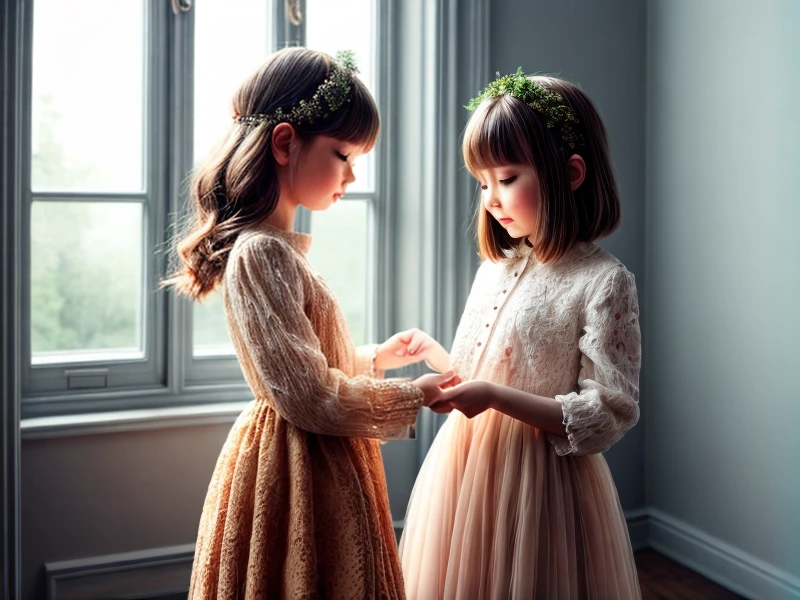Hobby and Business: Tips to Turn Coin Jewelry into a Profitable Venture
In the numismatics each coin has its own unique value, often far exceeding its face value. Take, for example, a rare 1974 aluminum penny value, which far exceeds the cost of an ordinary coin because of its exclusivity and unusual history. Together with this interesting specimen, there may be other unusual or old coins that you can turn into something much more valuable than change, for example, stunning handmade jewelry.
Coin jewelry is an art that combines history, craftsmanship and creativity. Whether it is a Victorian shilling turned into a pendant or a buffalo nickel made into a ring, turning coins into wearable pieces gives them a unique charm that is sorely lacking in today's mass-produced accessories. And the beauty of each of your craft can also be turned into a profitable business.
So today, we are going to discuss how to choose the right materials and develop the necessary skills to create stunning designs and how to turn from a hobbyist into a successful business owner by building your brand, setting effective prices and reaching the right audience.
How to Craft Unique Coin Jewelry: Things to Consider
Choosing the Right Coins for Your Creations
If you are pursuing this craft, you should understand that not every coin is suitable for jewelry making. While it may be tempting to use any old coin found in circulation, coins with a distinctive pattern, historical significance, or unique patina are best suited for jewelry. Consider the following factors when choosing coins:
Aesthetic appeal - Coins with intricate engraving, bold numerals or symbolic images are best suited for jewelry.
Metal composition - Silver, copper and brass coins are easier to work with than harder metals such as nickel or steel.
Size and weight - Large coins make great pendants, while smaller coins are better suited for rings and charms.
Sentimental or historical value - Antique coins, foreign currency and rare coinage can give jewelry an exclusive appeal.
If you are looking for interesting options for your pieces, check out numismatic markets, antique stores, estate sales and even online auctions to buy rare examples. Before you use a coin, however, you should assess its value - some rare coins can be much more valuable as collectibles than as jewelry components.

Assessing Coins Before You Start Crafting
But choosing the right coin is just the first step. Before you turn a coin into jewelry, you need to make sure it's authentic and estimate its value. What may seem like ordinary coins can actually be worth hundreds or even thousands of dollars. This is why evaluating the characteristics of a coin before processing is a critical step in the jewelry process.
And here, еo make the process easier, you may rely on such a specialized tool as Coin ID Scanner. The app can quickly provide important information: date and country of issue, characteristic features of the coin and even approximate market value.
And while estimating, you firstly should pay attention to the year of minting and the origin of the coin, as older or historically significant coins may have a higher value. It is equally important to determine the metal content and purity, as some metals such as silver or copper are more suitable for coin making due to their malleability, while others may be difficult to mold or modify. Finally, determining the rarity and numismatic value of a coin ensures that historically or monetarily valuable specimens are not mistakenly converted into jewelry while they could be worth more as collectibles.
Preparation Stage: Recommendations to Make Your Piece
Step 1: Preparing Your Coins
When a suitable coin has been selected, the first thing you need to do is clean and restore it. Since many old coins have accumulated dirt and oxidation, gently clean them with a mixture of warm water and mild soap to give them a natural shine. However, avoid harsh chemicals that can damage the coin's patina, as this aged finish often adds to the charm of the jewelry.
Step 2: Essential Tools and Techniques
Creating coin jewelry requires specialized tools to shape, drill, and modify coins without compromising their integrity. Basic tools include:
A jeweler’s saw or rotary tool for precise cutting.
A metal punch for making holes without distorting the coin.
Sanding and polishing tools to smooth rough edges.
A torch or soldering iron for connecting coins with metal findings.
Step 3: Combining and Soldering
Depending on the design, some coin jewelry involves soldering additional components such as metal chains, clasps or accent stones. So a steady hand and temperature control are essential to ensure longevity and a professional appearance.
Step 4: Adding the Finishing Touches
The final step is polishing and personalizing the jewelry. Many artisans use oxidation techniques to emphasize the details of coin engraving, or apply protective coatings to prevent tarnishing. Here you can also think about personal touches, such as engraving initials or adding gemstone accents that can further increase the uniqueness and value of the jewelry.

Time to Transform Your Craft into a Profitable Business
All starts with your passion, but making it a profitable business then requires branding, pricing, and effective marketing. Due to your strong identity, competitive pricing, and engaging storytelling you will be able to set your work apart in a crowded handmade jewelry market.
How to Build Your Brand and Find Your Audience
A successful jewelry business is not just selling products, it is selling history. Coin jewelry, with its historical and artistic appeal, attracts buyers who appreciate craftsmanship and uniqueness. Whether you want your jewelry to express vintage elegance, minimalist charm, or stand out, your brand should reflect a clear, consistent aesthetic on platforms like Instagram, Etsy, and your website.
The second important thing is to understand your target audience. Coins are always of interest to collectors, fashion lovers, travelers, and gift buyers who like pieces with sentimental or historical value. Determining where customers are shopping - online venues or social media - can help optimize your marketing efforts.
How to Present Your Jewelry and Set the Right Price
It's not a secret that how you present your jewelry can make or break a sale. Quality images that convey texture, engraving and craftsmanship will help potential buyers get a feel for your work. Well-lit close-ups, shots of people wearing the jewelry, and themed backgrounds that complement rather than overwhelm the piece all contribute to a strong visual presence.
Product descriptions should go beyond materials - they should tell a story. Instead of a simple description like “Silver Coin Pendant,” you should emphasize its history, uniqueness and craftsmanship, creating an emotional connection with buyers.
Pricing jewelry is another delicate balance, as too high a price will scare buyers away, too low will undervalue your craftsmanship. Here you should consider the following factors: material costs (coins, chains, clasps and gemstones); labor and time (calculate an hourly rate for your work); rarity of coins (some of them are more expensive); market research (research competitors' prices to stay competitive); packaging and shipping.
A common pricing model is to double or triple the cost of materials and labor to determine the retail price. Think tiered pricing and provide affordable simple designs and premium custom products so you can cater to different customer segments.
How to Market Your Coin Jewelry for Maximum Exposure
To grow a successful jewelry business, you should be looking into strategic marketing solutions to connect with the right customers. Here you can use social media, influencer partnerships and targeted advertising to increase visibility and effectively drive sales.
To successfully promote coin jewelry consider the following options:
Utilize social media - use platforms like Instagram, Pinterest and TikTok to showcase your designs. Post videos, design ideas and customer testimonials to attract potential buyers.
Collaborate with influencers - Cooperate with jewelry or fashion influencers to expand your audience. Due to sending items for reviews or working with stylists you may build your credibility and increase your audience reach.
Use paid advertising - invest in targeted advertising on Facebook, Instagram and Pinterest to get your pieces on the radar of people actively searching for unique jewelry.
Create exclusive offers - introduce limited edition collections, early booking discounts or loyalty rewards to attract repeat buyers and get them excited.
Tip: Try to engage your audience by responding to comments and messages or even give aways. Due to building a close relationship with potential customers you may add trust and make them more likely to buy.
Coin Style
Coin jewelry is more than just a way to create something beautiful, it is an opportunity to give old money a new role. Instead of gathering dust in a piggy bank, they can become part of a story that people carry with them. And if you take a smart view, the hobby will turn into a business where every coin is a step towards success.
Scopri anche:
In a world filled with mass-produced items and generic designs, there is a growing appreciation for unique creations that evoke a sense of creativity and imagination. Creazioni Uniche, which translate...
For lovers of handmade goods, art, and design, and mothers who enjoy creating imaginative games with and for their children, the art of creating with children opens up a world of endless possibilities...
Discover the latest trends in handmade fashion accessories with Handmade Treasures. Explore how sustainable materials, personalized designs, and timeless craftsmanship are transforming fashion. Embrac...
© 2024 Handmade Treasures
All rights reserved.
Our Partners:
Free phone number tracker



